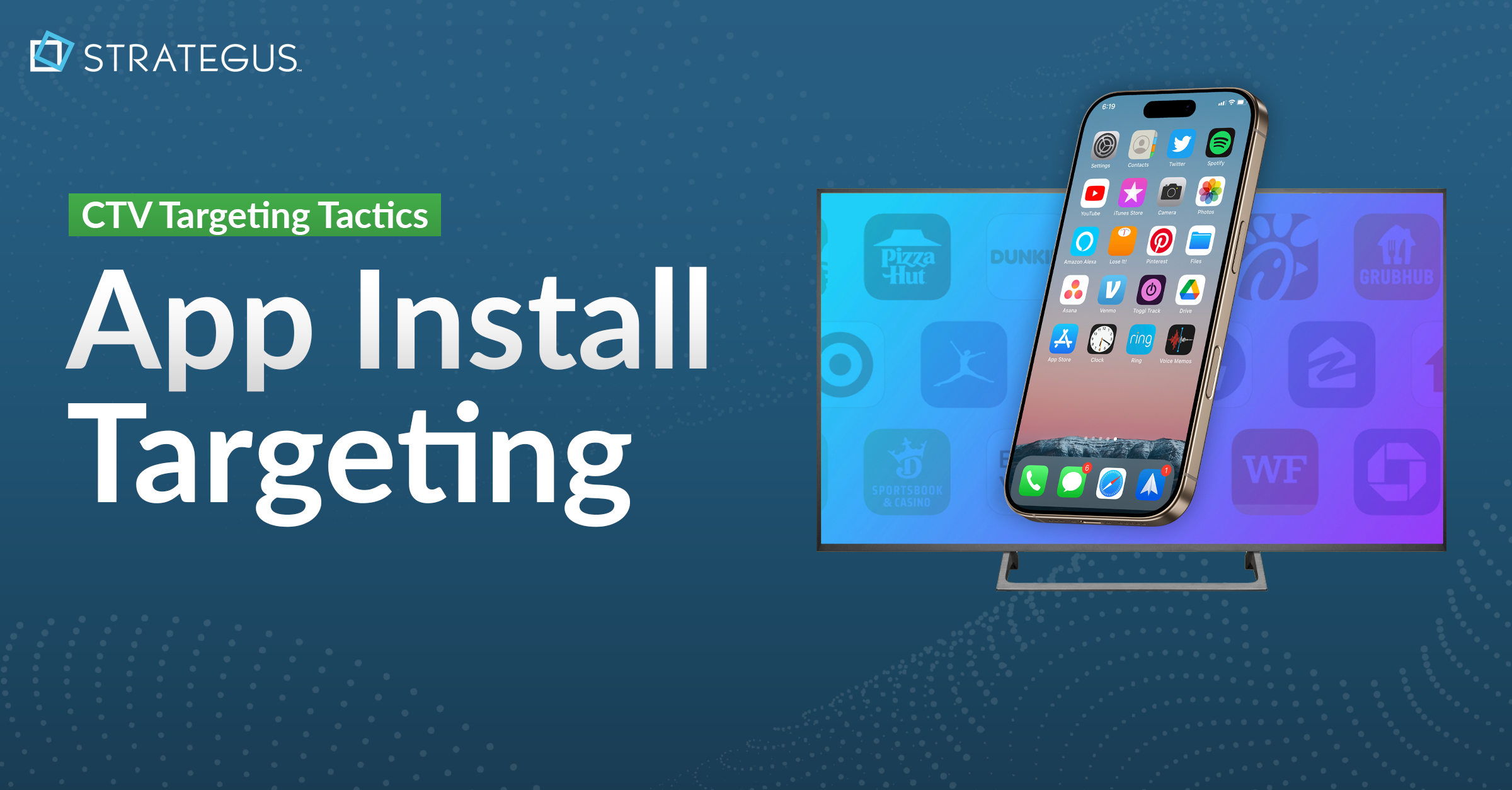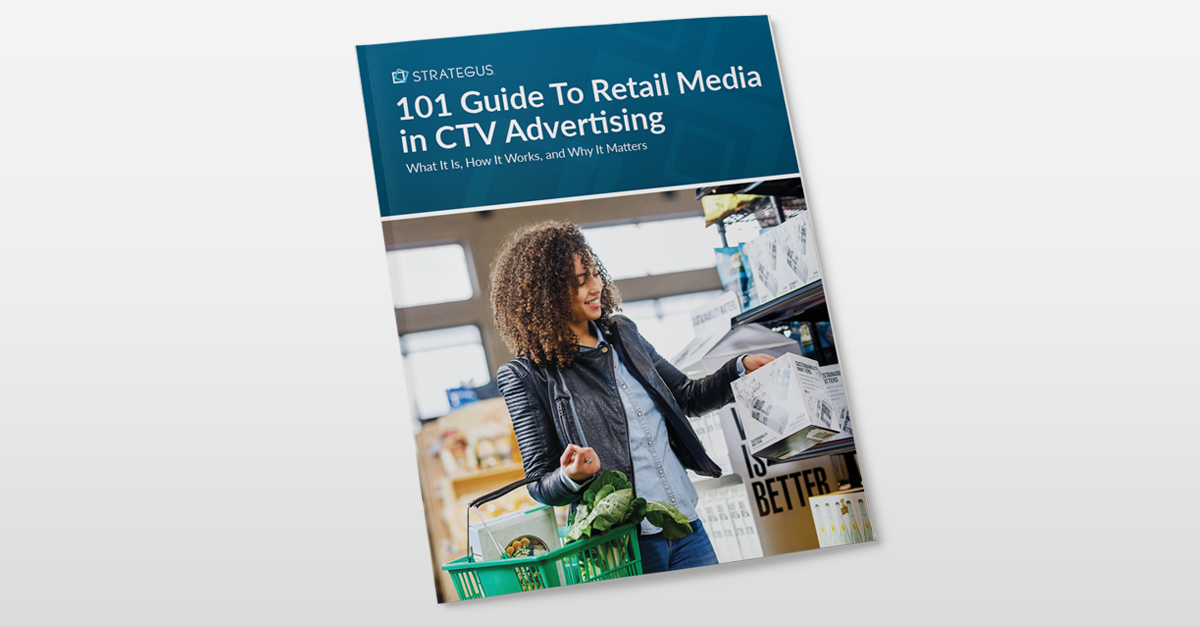- Home
- Strategus Blog
- DSP vs SSP Advertising: What's the Difference?
DSP vs SSP Advertising: What's the Difference?
11 minutes read

Ever wonder how brands place ads in the right spot while publishers maximize revenue from their sites?
The answer lies in DSPs and SSPs. They’re two sides of programmatic advertising, but with very different roles.
This guide explains DSP vs SSP in simple terms so you know how each works and why both matter.
Key Takeaways
- A demand-side platform (DSP) serves advertisers by buying inventory programmatically with advanced targeting, real-time bidding, and analytics, while a supply-side platform (SSP) serves publishers by selling inventory, optimizing yield, and ensuring ad quality.
- DSPs provide centralized campaign management, cross-platform reach, performance optimization, and audience insights; SSPs manage inventory, connect to multiple buyers, and maximize revenue through real-time bidding.
- Together, DSPs and SSPs connect in ad exchanges where advertisers bid on impressions, ensuring precise audience targeting for buyers and higher fill rates for publishers.
- Challenges include steep learning curves, complex setups, fragmented ecosystems, reliance on automation without expert oversight, and risks of wasted budgets or undersold inventory.
- Strategus simplifies DSP and SSP use with hands-off campaign management, premium CTV inventory, advanced targeting, creative support, attribution tools, and real-time transparent reporting. Talk to a Strategus expert to learn more today
What’s the Difference Between DSP & SSP Advertising
A DSP (Demand-Side Platform) lets advertisers buy ad space, while an SSP (Supply-Side Platform) helps publishers sell their ad space.
Basically, DSP gives brands tools to target audiences, set budgets, and bid in real time to get the best value. On the other hand, an SSP allows publishers to manage their inventory, set prices, and connect with multiple buyers to maximize revenue.
DSP vs. SSP at a Glance
|
Feature |
DSP |
SSP |
|
Role |
Represents advertisers; helps them buy ad inventory programmatically |
Represents publishers; helps them sell ad inventory programmatically |
|
Inventory Access |
Provides access to a wide range of ad inventory across multiple SSPs and ad exchanges |
Provides access to a specific publisher's or group of publishers' ad inventory |
|
Targeting Capabilities |
Offers advanced targeting options, such as demographic, geographic, and behavioral targeting |
Offers targeting options based on the publisher's audience data and context |
|
Bid Management |
Allows advertisers to set bid prices and optimize campaigns based on performance goals |
Manages the auction process and selects the highest bidder for each ad impression |
|
Reporting and Analytics |
Provides detailed reports on campaign performance, audience insights, and ad spend |
Provides reports on inventory performance, fill rates, and revenue generated |
|
Brand Safety and Fraud Prevention |
Offers tools to ensure ads appear on brand-safe sites and protect against fraudulent traffic |
Implements measures to maintain inventory quality and prevent fraudulent activities |
Now, let’s take a look at the two in detail.
Demand-Side Platforms (DSPs) Explained
A Demand-Side Platform, or DSP, is a powerful tool designed for advertisers and agencies. Its primary purpose is to help them buy ad inventory programmatically across multiple sources, including SSPs and ad exchanges.
DSPs offer a centralized platform where advertisers can manage their campaigns, set targeting parameters, and optimize their ad spend. By using the vast amounts of data available through DSPs, advertisers can reach their target audience more effectively and efficiently.
Some key features of DSPs include:
- Advanced Targeting: DSPs allow advertisers to target their ads based on a wide range of criteria, such as demographics, interests, behaviors, and location. This ensures that ads are shown to the most relevant audience, increasing the likelihood of engagement and conversion.
- Real-Time Bidding (RTB): DSPs participate in real-time auctions for ad inventory, enabling advertisers to bid on impressions in real-time. This allows for more efficient ad buying and helps advertisers optimize their campaigns on the fly.
- Cross-Platform Reach: DSPs provide access to a wide range of ad inventory across various platforms, including desktop, mobile, and connected TV (CTV). This allows advertisers to reach their audience wherever they are consuming content.
- Performance Optimization: DSPs offer exhaustive reporting and analytics tools that help advertisers track campaign performance and make data-driven decisions. By analyzing metrics such as click-through rates, conversion rates, and cost per acquisition, advertisers can optimize their campaigns for better results.
Benefits of DSP Advertising
As digital advertising evolves, Demand-Side Platforms (DSPs) have become indispensable tools for marketers looking to run efficient, data-driven campaigns.
By automating the ad buying process and offering advanced targeting capabilities, DSPs provide significant advantages to advertisers.
1. Streamlined Ad Buying Across Channels
DSPs consolidate the ad buying process, allowing advertisers to purchase inventory across multiple channels, like connected TV (CTV), display, video, audio, and native ads, all from one platform.
This centralization saves time and simplifies campaign management, allowing brands to maintain consistent messaging across various touchpoints.
2. Advanced Targeting and Audience Insights
DSPs use valuable data integrations to help advertisers target specific audiences with precision. Using first-, second-, and third-party data, advertisers can segment audiences by demographics, interests, behavior, or geographic location.
These targeting capabilities make sure that campaigns reach the right people at the right time, improving engagement and ROI.
3. Real-Time Bidding and Optimization
One of the standout features of DSPs is real-time bidding (RTB). This technology allows advertisers to bid on ad inventory in milliseconds, ensuring efficient use of budget by only purchasing impressions that match campaign objectives.
Additionally, DSPs use machine learning to optimize campaigns dynamically, adjusting bids and targeting based on performance data.
4. Detailed Analytics and Reporting
DSPs provide advertisers with reporting tools that have information about campaign performance, audience engagement, and ROI. These analytics empower businesses to make data-driven decisions and refine their strategies for future campaigns.
Supply-Side Platforms (SSPs) Explained
On the other side of the programmatic advertising equation, we have Supply-Side Platforms, or SSPs. These platforms are designed to help publishers maximize the value of their ad inventory by connecting them with multiple demand sources, including DSPs and ad networks.
SSPs provide publishers with a streamlined way to manage, sell, and optimize their ad inventory programmatically.
By automating the selling process and using real-time bidding, SSPs help publishers increase their revenue and fill more ad slots.
Key features of SSPs include:
- Inventory Management: SSPs allow publishers to manage their ad inventory across various channels, such as display, online video, and connected TV (CTV). Publishers can set pricing rules, define ad placements, and control which ads appear on their sites.
- Yield Optimization: SSPs use advanced algorithms to automatically optimize the selling process, ensuring that publishers receive the highest possible price for their ad inventory. This is achieved through real-time bidding and by connecting publishers with a wide range of demand sources.
- Brand Safety and Fraud Prevention: SSPs help maintain the quality and integrity of a publisher's ad inventory by implementing measures to prevent fraudulent activities and make sure brand safety. This includes techniques such as inventory filtering, user verification, and domain whitelisting/blacklisting.
- Reporting and Analytics: SSPs provide publishers with detailed reporting on their inventory performance, including fill rates, revenue generated, and audience insights. This data helps publishers make informed decisions about their ad strategy and optimize their inventory for better results.
Benefits of SSPs
Supply-Side Platforms are a game-changing tool for publishers looking to maximize the value of their ad inventory. By streamlining the selling process and connecting publishers to a wide pool of advertisers, SSPs offer numerous advantages for effective ad monetization.
1. Maximized Revenue Through Real-Time Bidding
SSPs use real-time bidding (RTB) to auction ad inventory to the highest bidder in milliseconds. This competitive bidding ensures publishers get the best possible price for their inventory, maximizing revenue while maintaining transparency in the process.
2. Access to a Broader Range of Advertisers
SSPs connect publishers to multiple demand-side platforms (DSPs), ad exchanges, and direct advertisers, significantly expanding the pool of potential buyers. This increased access helps publishers fill their inventory more efficiently and achieve higher fill rates, even for niche audiences.
3. Advanced Inventory Management
With SSPs, publishers can manage their ad inventory more effectively. SSPs offer tools to categorize inventory by factors such as audience demographics, content type, or geographic location, allowing publishers to sell their ad space strategically and achieve optimal monetization.
4. Ad Quality and Brand Safety Controls
SSPs provide publishers with tools to ensure ad quality and maintain brand safety. These platforms allow publishers to block specific advertisers, restrict certain ad categories, and filter out low-quality or inappropriate ads, ensuring a positive user experience and protecting the publisher’s reputation.
5. Reporting and Insights
SSPs offer detailed analytics on inventory performance, buyer demand, and revenue metrics. These insights enable publishers to make data-driven decisions, refine their strategies, and optimize their ad inventory for better results.
How DSPs and SSPs Work Together
DSPs (for advertisers) and SSPs (for publishers) connect both sides of the ad marketplace and make programmatic advertising run smoothly. Here’s how the process works step by step:
- A publisher uses an SSP to list available ad space, such as banner slots or video placements on their website or app.
- The SSP passes this available space into an ad exchange, which acts as the middle ground between buyers and sellers.
- The exchange sends details of the ad space (like audience type, location, or device) to multiple DSPs.
- Advertisers using DSPs check if the inventory matches their campaign goals, such as targeting certain demographics, interests, or behaviors.
- DSPs automatically place bids through real-time bidding (RTB) to compete for the same ad space.
- The highest bid wins instantly, and the chosen ad is displayed on the publisher’s site or app.
This back-and-forth ensures advertisers reach the right people at the right time while publishers fill their inventory and maximize revenue. Together, DSPs and SSPs create a fast, automated, and data-driven system that benefits both sides.
Common Issues with DSPs and SSPs
While DSPs and SSPs are powerful tools in programmatic advertising, they come with significant limitations that can make them challenging to use effectively.
These platforms require expertise, time, and resources, leaving many businesses struggling to achieve their advertising goals.
1. Steep Learning Curve and Complexity
Both DSPs and SSPs demand a high level of technical knowledge and expertise to operate effectively.
Advertisers using DSPs must understand targeting parameters, bidding strategies, and real-time optimization, while publishers on SSPs must master inventory management, pricing models, and ad quality controls.
For businesses without dedicated programmatic teams, navigating these complexities can lead to poorly executed campaigns and wasted budgets.
2. Time-Intensive Management
Successful campaigns require constant monitoring, testing, and optimization. Advertisers must analyze performance metrics, adjust bids, and tweak audience targeting, while publishers must manage inventory availability and pricing.
This hands-on approach is resource-intensive, taking time and focus away from other more important business activities.
3. Fragmented Ecosystem
Despite their role in streamlining programmatic advertising, DSPs and SSPs often create a fragmented ecosystem.
Advertisers and publishers must juggle multiple platforms, data sources, and integrations, leading to inefficiencies and potential misalignment between campaign goals and execution.
4. Lack of Human Guidance
Both DSPs and SSPs rely heavily on automation, but without expert oversight, campaigns can underperform. Automated systems cannot always account for the nuances of audience behavior, creative strategy, or market trends.
This can result in ads being delivered to irrelevant audiences or failing to achieve desired results.
5. High Risk of Budget Mismanagement
Without proper expertise, advertisers and publishers risk overspending or underselling inventory.
Mistakes in bidding strategies, pricing, or targeting can lead to significant financial losses, especially for businesses with limited budgets or in highly competitive markets.
Closing Thoughts — How Strategus Simplifies DSPs and SSPs
DSPs and SSPs offer incredible reach and targeting, but their complexity can overwhelm even experienced teams. At Strategus, we make programmatic advertising simple and effective by managing every aspect of your campaigns. From strategy and audience targeting to creative execution and reporting, we handle the technical details so you can focus on growing your business.
Our fully managed approach ensures your ads reach the right audience across top Connected TV (CTV) platforms. With advanced targeting, we use demographic, behavioral, and interest data to connect with viewers most likely to engage. Our attribution tools measure which ads drive results, allowing campaigns to be refined in real time for maximum ROI.
Creative matters just as much as placement. Strategus partners with top creative agencies to build ads that stand out, match campaign goals, and drive conversions. Meanwhile, our reporting dashboard provides full transparency — track impressions, video completions, clicks, and conversions, with actionable insights into audience engagement, device performance, and geography.
With premium inventory access, hands-on optimization, and real-time reporting, we turn complex programmatic campaigns into measurable results. Partner with us and see how Strategus can simplify your DSP and SSP campaigns. Speak to a Strategus expert today.
Stop struggling with DSPs and SSPs and partner with a hands-on service. Speak to a Strategus expert today to learn more about how we can help.
Frequently Asked Questions
1. How Do DSPs Target Audiences?
DSPs use data to find the right people. They combine first-party data, third-party segments, and contextual signals like page content, device, and location. They build audience lists, lookalikes, and retargeting pools. They control reach with frequency caps and dayparting. Real-time feedback improves targeting as results come in.
2. How Does a DSP Measure Attribution?
A DSP tracks impressions, clicks, and views, then matches them to conversions with logs and identity graphs. It uses view-through and click-through windows, dedupes events, and assigns credit with rules like last-touch or position-based. Incrementality tests, geo splits, and holdouts show lift beyond organic or other channels.
3. How Can Advertisers Efficiently Activate Premium Inventory in DSPs?
Advertisers set up private marketplace and programmatic guaranteed deals with selected publishers. They apply brand safety controls, viewability thresholds, and fraud filters. They layer audience data only where it adds value. They align bids to quality signals like supply path, domain lists, and completion rates. Consistent testing refines deals.
4. Why Should a DSP Integrate With Multiple Supply Sources?
Multiple supply sources expand reach and reduce reliance on any single exchange. This improves scale, auction pressure, and pricing. It enables supply path optimization to choose cleaner routes with lower fees and better transparency. It also unlocks unique publisher relationships, premium formats, and diverse contexts for stronger performance.
5. What are the Benefits of Multisource Inventory in Advertising?
Multisource inventory increases competition for impressions, which can lower effective costs and improve match rates with target audiences. It gives more options for formats and contexts, reduces gaps in reach, and improves pacing. It also supports testing across exchanges to find high-quality paths with stronger viewability and outcomes.
6. How Do SSPs Help Maintain a Healthy Supply Path for Advertisers?
SSPs expose transparent auction details, pass clean identifiers, and reduce hops that add hidden fees. They support seller definitions and direct paths to publishers. They remove spoofed domains and enforce ads.txt and sellers.json. These steps shorten routes, improve win rates, and deliver more budget to working media.
7. How Do SSPs Support Fraud Prevention For Buyers and Sellers?
SSPs use IVT detection, domain and app verification, and device integrity checks. They filter bots, invalid placements, and stacked or hidden ads. They enforce ads.txt, sellers.json, and app-ads.txt. They integrate third-party fraud tools, monitor anomalies in real time, and remove bad actors. These controls protect budgets and users.
8. What are the advantages of Using a Transparent SSP?
A transparent SSP shows fees, auction type, and supply path details. It reveals publisher and placement information, viewability signals, and blocklist status. Clear reporting supports fair pricing and easier troubleshooting. Buyers gain confidence in quality. Publishers gain trust and stronger demand. Everyone optimizes faster with reliable log-level data.
9. How Do Premium Publishers Benefit From Advanced SSP Solutions?
Premium publishers gain stronger yield with smarter auction tooling, price floors, and demand priority controls. They get you more buyers through curated PMPs and programmatic guaranteed. They improve user experience with better ad quality filters and frequency tools. Detailed insights guide packaging, pricing, and inventory strategy for sustainable revenue.
10. How Does An SSP Support Cross-Device Campaign Execution?
An SSP passes consistent identifiers and device metadata, which helps connect impressions across mobile, desktop, and CTV. It supports standards for consent and privacy, enabling lawful data use. It packages omnichannel deals, aligns frequency across placements, and shares signals buyers need to coordinate reach, sequencing, and measurement.
Strategus is a managed services connected TV(CTV) advertising agency with over 60,000+ campaigns delivered. Find out how our experts can extend your team and drive the result that matter most.
Talk to an Expert
Seeking a Custom CTV Strategy That Delivers?
What to read next
App Event Tracking: Tie Mobile App Activity to CTV Campaigns
Let’s say you’re running a CTV campaign for a personal finance app.
5 minutes read

Stop Guessing Who Your Audience Is — Let Their Apps Tell You
Connected TV (CTV) targeting often falls in one of two camps.
8 minutes read
See Who Bought After Your Ad + How Much They Spent
You can’t improve what you can’t measure. And for years, that’s been a major problem with TV advertising.
4 minutes read

First-Party Attribution: Match Ads to Sales With CRM Data
The value of first-party data continues to grow.
7 minutes read















